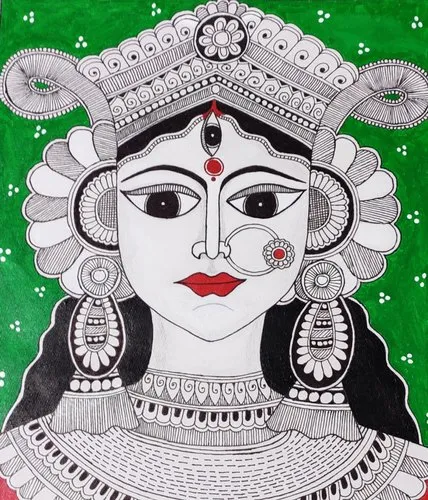Madhubani - Mithila Art
Art has the ability to create stories and take us back in time. Like, literally. There are so many art forms which make us time travel and one of them, reconnected with the world in a contemporary way, is Madhubani or Mithila Art.
Madhubani paintings date back to at least 2500 years. This form of Art originated in the Madhubani region of Nepal and India, by women of different communities. It is also known as Mithila paintings as it was practiced in the Mithila region of Bihar.
This Art came into recognition after 1934's Bihar-Nepal earthquake which destroyed the houses and were later discovered by the British officers. Before this, the paintings were done only on the mud walls of the houses, mostly limiting to the interior walls. Madhubani/Mithila paintings are painted with the use of twigs, fingers, brushes, matchsticks and even nib pens. The most interesting part of these paintings is that no space is left empty. They are either filled with geometric shapes or some border or a floral design.
These paintings integrate mythological, natural and floral related themes as well as geometrical shapes.
This art form has 4 distinctive styles - Bharni, Kachni, Godhana and Geru.
The Brahmins are associated with the style of Bharni paintings. This style incorporated the theme of Hindu mythologies and incarnation stories.
The Kachni paintings are associated with the Kayastha communities. The distinctive feature of this style is it's monochromatic nature or the use of minimal hues. The themes are similar to those of the Bharni style.
The lower castes are the ones associated with the Godhana or tattoo style. The themes of this style include everyday motifs of flora and fauna and the story of a local Dulsadh hero.
The Geru style was done by the lower castes in later times, and that's why this style used earthen colors and papers washed with gobar, giving it the name - Geru (Gobar) paintings.
However, the transition with the modern world ended up not dividing the styles into different castes.
Due to its structure, content and style passed on from previous generations to the future and not disrupting the beautiful allocation in any manner, Madhubani art has been given a coveted Geographical Indication status.
With time, Madhubani paintings also went a transformation. Not any in the form of structure or style, but the mediums used. The traditional structure and style have been passed on from generations and is disciplined. From the old times of mud walls to canvases and cloths, the paintings are now also done on mediums such as earthen vessels, lifestyle products, sarees, etc.
